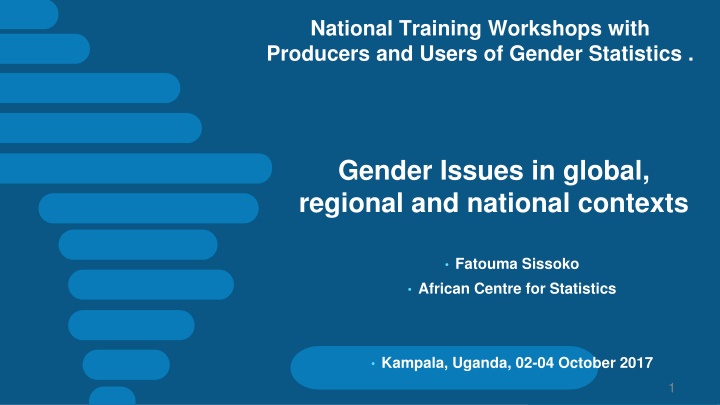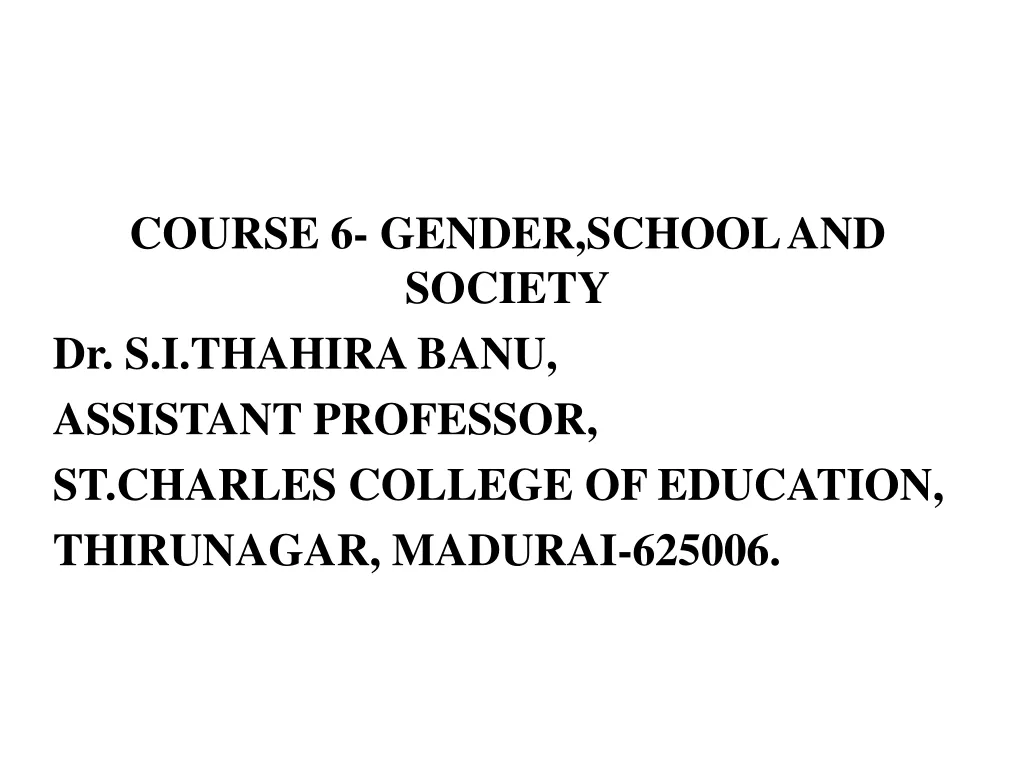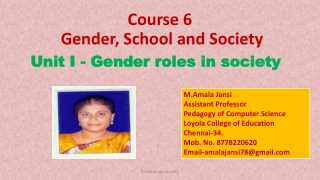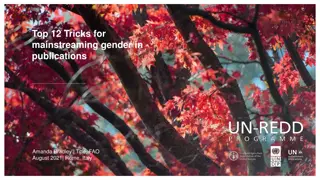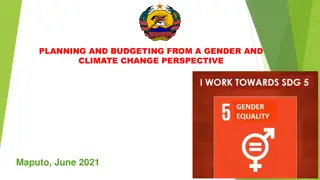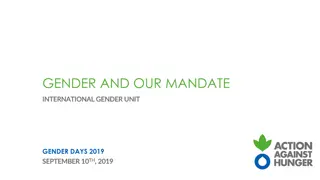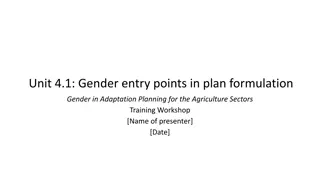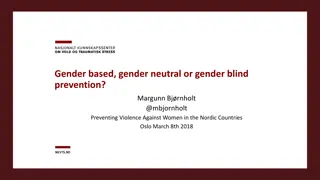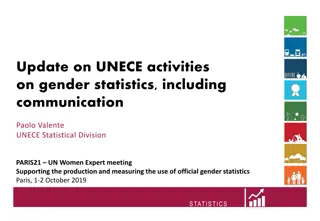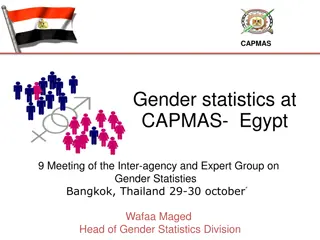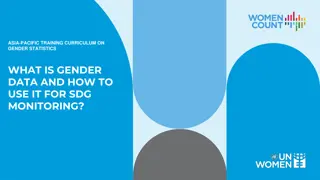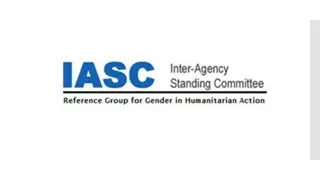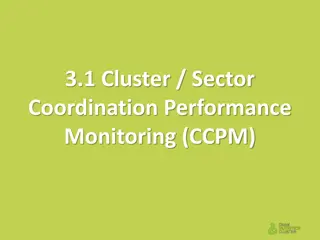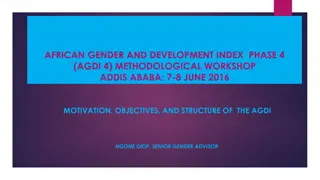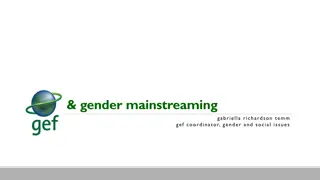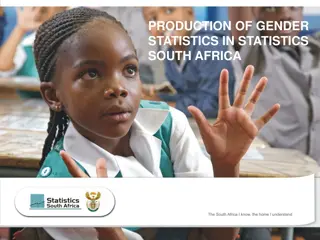National Training Workshops on Gender Statistics: Global, Regional, and National Contexts
This event, organized by the African Centre for Statistics, will focus on gender issues in various contexts. The workshops aim to enhance the capacity of producers and users of gender statistics, fostering collaboration and knowledge exchange. The event will take place in Kampala, Uganda from 02-04 October 2017. It provides a platform to discuss challenges, best practices, and opportunities in the field of gender statistics.
Download Presentation

Please find below an Image/Link to download the presentation.
The content on the website is provided AS IS for your information and personal use only. It may not be sold, licensed, or shared on other websites without obtaining consent from the author.If you encounter any issues during the download, it is possible that the publisher has removed the file from their server.
You are allowed to download the files provided on this website for personal or commercial use, subject to the condition that they are used lawfully. All files are the property of their respective owners.
The content on the website is provided AS IS for your information and personal use only. It may not be sold, licensed, or shared on other websites without obtaining consent from the author.
E N D
Presentation Transcript
26-28 National Training Workshops with Producers and Users of Gender Statistics . Gender Issues in global, regional and national contexts Fatouma Sissoko African Centre for Statistics Kampala, Uganda, 02-04 October 2017 1
Outline Background Efforts made to improve gender statistics at Global, Regional and National levels Since Beijing Platform for Action Status gender statistics in Afica
Background: Why gender statistics?
Background: the first Womens Conference The call for improving the production and use of gender statistics to support development and decision making process, echoed since the first Women s Conference that: Recognized the need for statistics as information and advocacy tool on gender inequalities.
Background: Beijing Platform for Action (1995) Identified gender mainstreaming as a global strategy for achieving gender equality Identified the generation and dissemination of sex-disaggregated and gender related data and information as a strategic objective for evidence based planning and evaluation. Recognized the need for statistics for advocacy, evidence-based policy making and assessment of progress towards gender equality goals at Nat., Reg. and Internat level; and has then Called for specific actions related to gender statistics: Regular review of the official statistical system and its coverage of gender issues, and preparation of plans for needed improvements (para 207(b)) Improvement of data collection in certain areas (para 206); Production of gender statistics and use in policy and programme planning and implementation (para 206 (b) & para 207 (d))
Background: 2030 Agenda- SDGs The declaration of the 2030 agenda reaffirms commitments to the BPfA and Call for Increased support for strengthening data collection and capacity building in Member States, to develop national and global baselines where they do not yet exist. It commits to address gap in data collection so as to better inform the measurement of progress, in particular for those targets below which do not have clear numerical targets . Furthermore, it sets the principle of disaggregation of relevant SDG indicators according to some characteristics, including sex
Background: 2030 Agenda- SDGs Specific Goal: Goal 5 Achieve gender equality and empower all women and girls : 9 targets, addressing multiple concerns (e.g. 5.1; 5.2, 5.3, 5.a, 5.c) Gender mainstreamed if other goals, and targets: A quarter of Targets explicitly or implicitly addressing gender issues
Efforts made Since Beijing Platform for Action A wide range of initiatives and activities have been undertaken at the country, regional and global levels regarding the mainstreaming gender into statistics:
9 Engendering Statistics The Global Level
Engendering statistics: Global Level Global Gender Statistics Programme 2007 Objective : To enhance the capacity of countries to collect, disseminate and use reliable statistics and indicators to assess the relative situation of women and men in gender-sensitive, policy-relevant Areas Coordinated by IAEG-Gender Statistics Implemented by UNSD
Engendering statistics: Global Level Global Gender Statistics Programme 2007 Covering the following areas: 1 - International Coordination: Improving coordination and synergies among existing initiatives on gender statistics such as the IAEG and the regional forums on gender statistics (6 forum so fare). IAEG: Africa: Ethiopia, Tanzania, Botswana, Cameroon, Ghana, Niger, Algeria, Egypt. 2 - Promoting methodological development, including in emerging areas of gender concern (Technical materials such as guidelines and handbooks). EXPLES Violence against Women Establishment of the Fiends of the Chair group on Indicators to measure Violence Against Women (FOC-VAW), 2008 by the UN Statistical Commission; Adoption of minimum set of indicators on VAW, 2009 by UN Statistical Commission; UN Guidelines for the Production of Statistics on Violence Against Women, 2013 Time Use : International Classification of Activities for Time Use Statistics-ICATUS
Engendering statistics: Global Level Gender Statistics Manual on Integrating a Gender Perspective into Statistics Statistical reports and publications 3. Capacity-Building : Strengthening statistical capacity for the production of gender relevant data Organization of training workshops/study tours/ad-hoc /advisory services 4. Data Management & Dissemination: Improve access to data and materials Global Gender Statistics platform; Continuation of the World s Women series: Analysis of trends in key areas, review of data availability ; Minimum set of Gender Indicators
Engendering statistics: Global Level Minimum set of Gender Indicators: Internationally-agreed indicators to monitor gender equality and women s empowerment (IAEG -GS 2011 and UN Statistical Commission 2013) Cover 5 domains : (i) Economic structures, participation in productive activities and access to resources (ii) Education (iii) Health and related services (iv) Human rights of women and the girl child (V) Public life and decision-making 52 quantitative indicators 11 qualitative indicators related to national norms Among the 52 quantitative indicators: 37 Tier 1 indicators 8 Tier 2 indicators 7 Tier 3 indicators Among the 11 qualitative indicators: 9 Tier 1 indicators 2 Tier 2 indicators
Focus of global work on gender stats coordination and synergies among existing initiatives on GS: (IAEG and the regional forums on gender statistics) Internation.coordination Evaluating and improving definitions, concepts, methods Manuals, guidelines & handbooks Tasks Forces/Expert Groups Intl. organizations Member states Improving skills in data production, analysis and dissemination Training workshops & study visits Assisting in data compilation, analysis and dissemination Reports & publications on women and men 14
15 Engendering Statistics The Regional Level
Engendering statistics: Regional Level Date 2004 Milestone African Gender Development Index methodology manual published Regional Workshop on Gender Statistics Addis Ababa Statistics Commission - Africa Working Group on Gender Statistics 2008 2008 High-level Policy Dialogue on Gender Statistics for Socioeconomic Development Kampala 2008 Kampala City group on gender statistics was formed 2009 Handbook on Engendering of Censuses and Surveys 2010 National studies on violence against womender Statistical System 2011 Capacity building: Training, advisory services in various areas of GS Technical and training materials: glossary on GS, compendium on GS, toolkit and online toolkit on gender statistics etcc) Report on AGDI pilot African Women s Rights Observatory established African Gender Statistics Programme 2011 2012
17 Engendering Statistics The National Level
Engendering statistics: National Level National gender statistics programmes Mainstreaming gender in NSDS Gender Focal Points Development of training materials National workshops and reports National publications on women and men Gender Budgeting
Engendering statistics: Status Overall, increased availability of statistics and gender statistics (mainly due to improved dissemination of sex-disaggregated statistics; more household surveys in less developed regions; and more use of administrative sources in more developed regions) Nevertheless, quality gender statistics are still lacking in many countries. Data scarcity in areas such as poverty; time use; violence against women; environment. Data not collected in some countries
Engendering statistics: Status Data already collected not adequately disseminated: Data disseminated not disaggregated enough to allow the identification of population groups where gender differences are more pronounced In many countries, dissemination of gender statistics is not integrated in regular outputs prepared by NSOs, such as analytical reports or databases. Some countries still use old concepts and measurement that do not take into account gender differences and gender biases.
Engendering statistics: Status Africa: Despite notable progress, Capacity is still being developed and mainstreaming a gender perspective in the statistical system remains a challenge for many countries. In 2011, a Global Review of GS Programmes. revealed the following: Most African countries lacked a dedicated budget for gender statistics and only some benefited from ad hoc funds. Gender focal points or units were primarily tasked with answering requests for gender statistics and the compilation and dissemination of the data Only a few countries had established interministerial coordination mechanisms for overseeing the production of gender statistics at the national level.
Engendering statistics: Status Only half of them had set in place permanent arrangements for user- producer dialogue, with a view to guiding the formulation of concepts and definitions and facilitating data collection programmes. Very few countries have managed to achieve their objectives of mainstreaming gender into their statistics. The common reasons for this include: lack of financial and human resources, and of political will. limited capacity to produce and use gender statistics
Question: Do you have a National Gender Stat. Programme in Uganda? 1. Led by UBOS? Minister in charge of Gender? 2. Implemented in coordination with which Ministries (coord. Mech.)? 3. Undertaken in collaboration with which partners, incl UN agencies? 4. What are strategies and activities (capacity-building activities/statistical outputs)? 23
Exercise List all initiatives taken in Uganda to mainstream gender into statistics since 2010, with specific focus on those taken in your areas of work Discuss and list key achievements Discuss and list key challenges Propose a way forward on engendering statistical processes in Uganda
